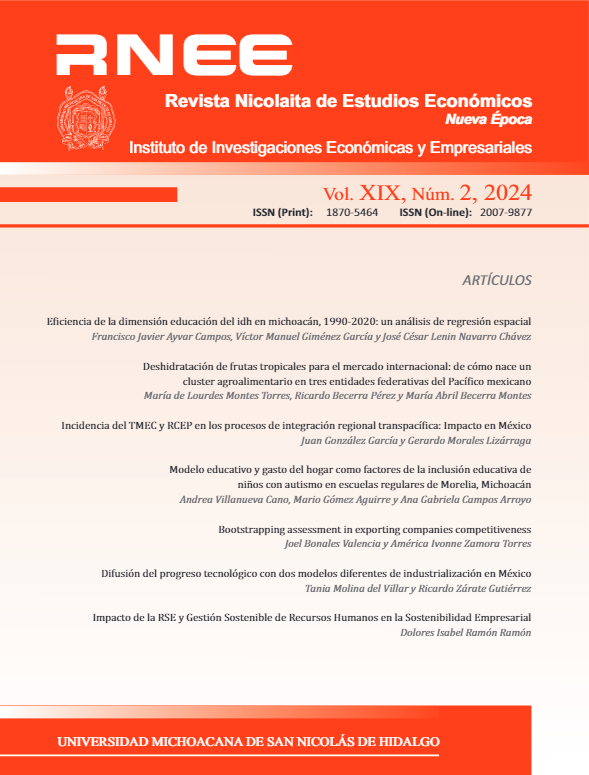Efficiency of the education dimension of the HDI in Michoacán, 1990-2020: a spatial regression analysis
DOI:
https://doi.org/10.33110/rnee.v19i2.357Keywords:
: Education, Municipalities, Michoacán, DEA, Spatial Econometrics.Abstract
The state of Michoacán faces the challenge of a low level of human development and significant inequalities that
exacerbate educational disparities among its municipalities. This research aims to evaluate the efficiency of
municipalities in generating educational well-being during the period 1990-2020 and to determine the influence
of spatial factors on this process. To achieve this, based on the concepts of human development, efficiency, and
spatial dependence, a DEA model with bad outputs was designed, the Malmquist-Luenberger Index was
calculated, and a spatial regression model was established. The results reveal that only six municipalities were
efcient in resource utilization, there was an increase in municipal and state productivity, and spatial factors
infuenced the eficiency in generating educational well-being. Based on these findings, it is recommended to
increase educational investment, equitably distribute resources, promote collaboration among municipalities,
implement policies that consider spatial factors, and monitor progress to ensure sustainable improvements in
educational well-being across municipalities.
Downloads
Published
How to Cite
Issue
Section
License
Copyright (c) 2025 Francisco Javier Ayvar Campos, Víctor Manuel Giménez García, José César Lenin Navarro Chávez

This work is licensed under a Creative Commons Attribution-NonCommercial-NoDerivatives 4.0 International License.








